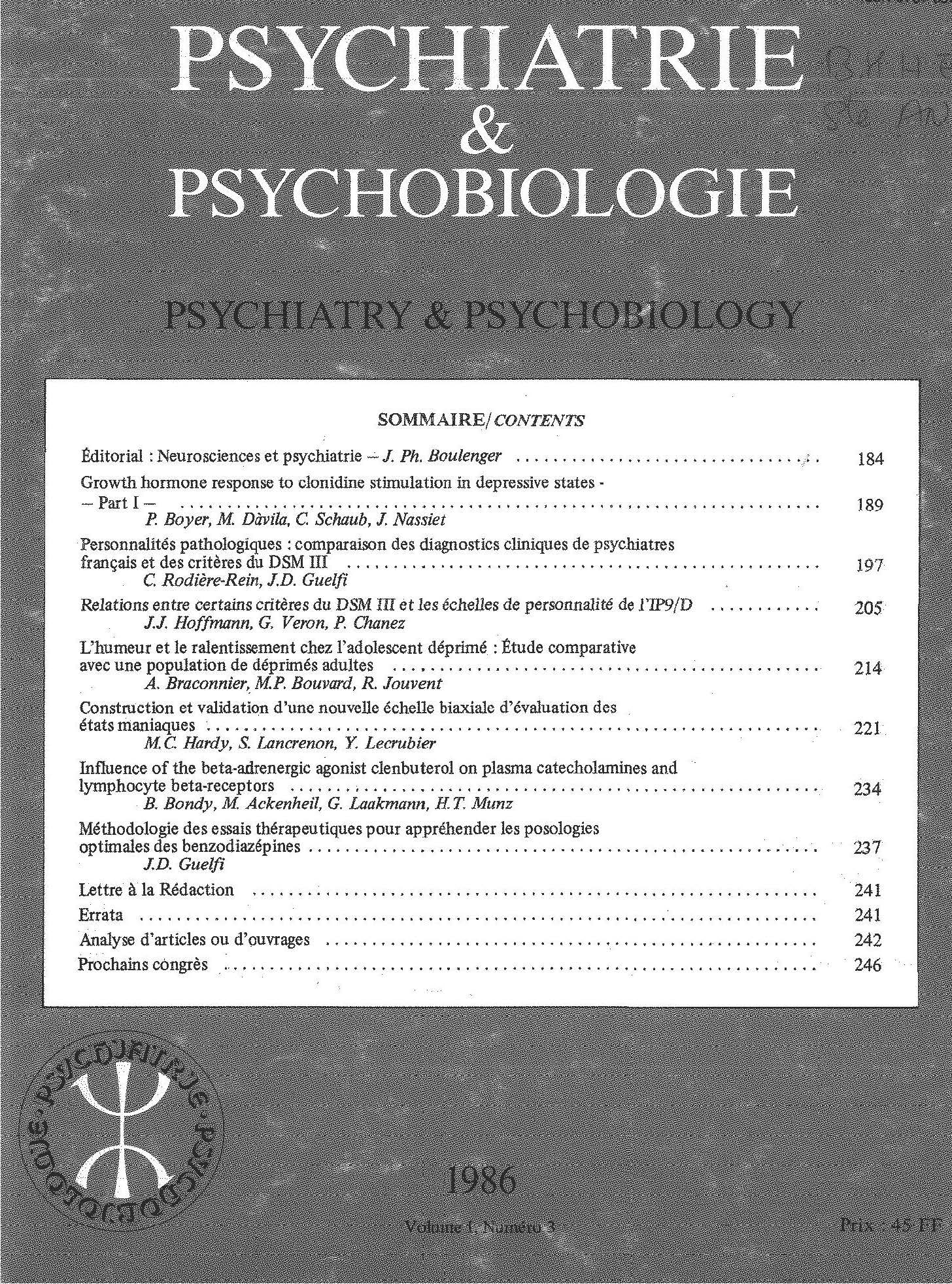Article contents
Génétique épidémiologique des troubles de l’humeur: une nouvelle voie de recherches?
Published online by Cambridge University Press: 28 April 2020
Résumé
Les récents progrès de la biologie moléculaire offrent l’espoir d’une meilleure compréhension de la composante génétique des maladies mentales, la dépression en particulier. L’accès à un nombre quasiment illimité de marqueurs génétiques polymorphes et couvrant le génome, accroît l’efficacité des techniques de liaison génétique (linkage) qui permettent l’étude de la cotransmission des marqueurs génétiques et du trait clinique dans des familles dont plusieurs membres sont malades. D’ores et déjà, en ce qui concerne les troubles de l’humeur, 2 pistes ont été mises en évidence: celle d’une liaison à l’extrémité distale du bras long du chromosome X (Mendlewicz et al., 1987) et celle d’une liaison à l’extrémité du bras court du chromosome 11 (Egeland et al., 1987). Toutefois, ces résultats n’ont pas été constamment répliqués, ce qui soulève le problème de l’hétérogénéité étiologique des troubles dépressifs.
Summary
Recent developments in molecular biology may elucidate the role of genetic factors in mental disorders, and particularly in depression. The availability of an almost unlimited number of polymorphic genetic markers, covering the whole genome, increases the efficacy of linkage techniques investigating the segregation of genetic markers with the clinical trait in families of affected members. Two chromosomal locations have already been identified in linkage studies of affective disorders: one on the distal end of the long arm of the X chromosome (Mendlewicz et al., 1987) and the other at the distal end of the short arm of chromosome 11 (Egeland et al., 1987). Nevertheless, these results have not always been reproduced, thus suggesting the existence of etiological heterogeneity in major affective disorders.
Keywords
- Type
- Revue
- Information
- Copyright
- Copyright © European Psychiatric Association 1989
References
Références
- 1
- Cited by



Comments
No Comments have been published for this article.